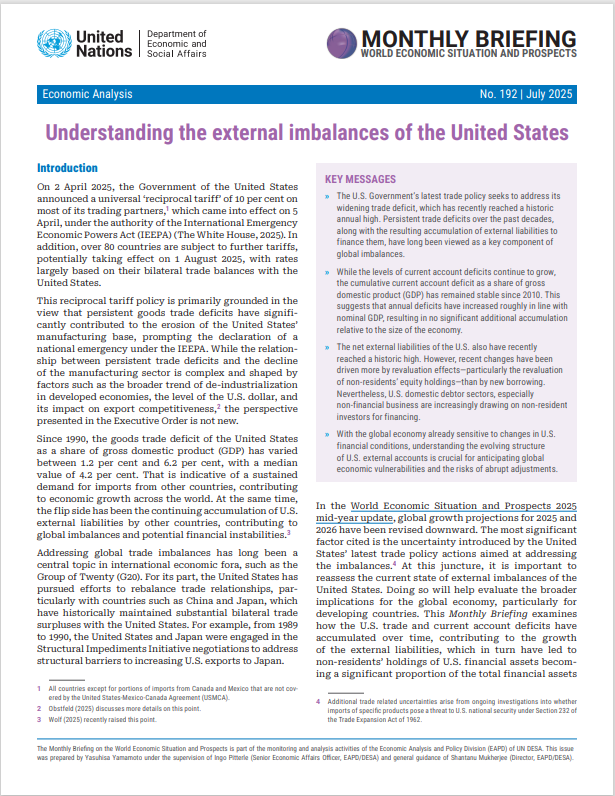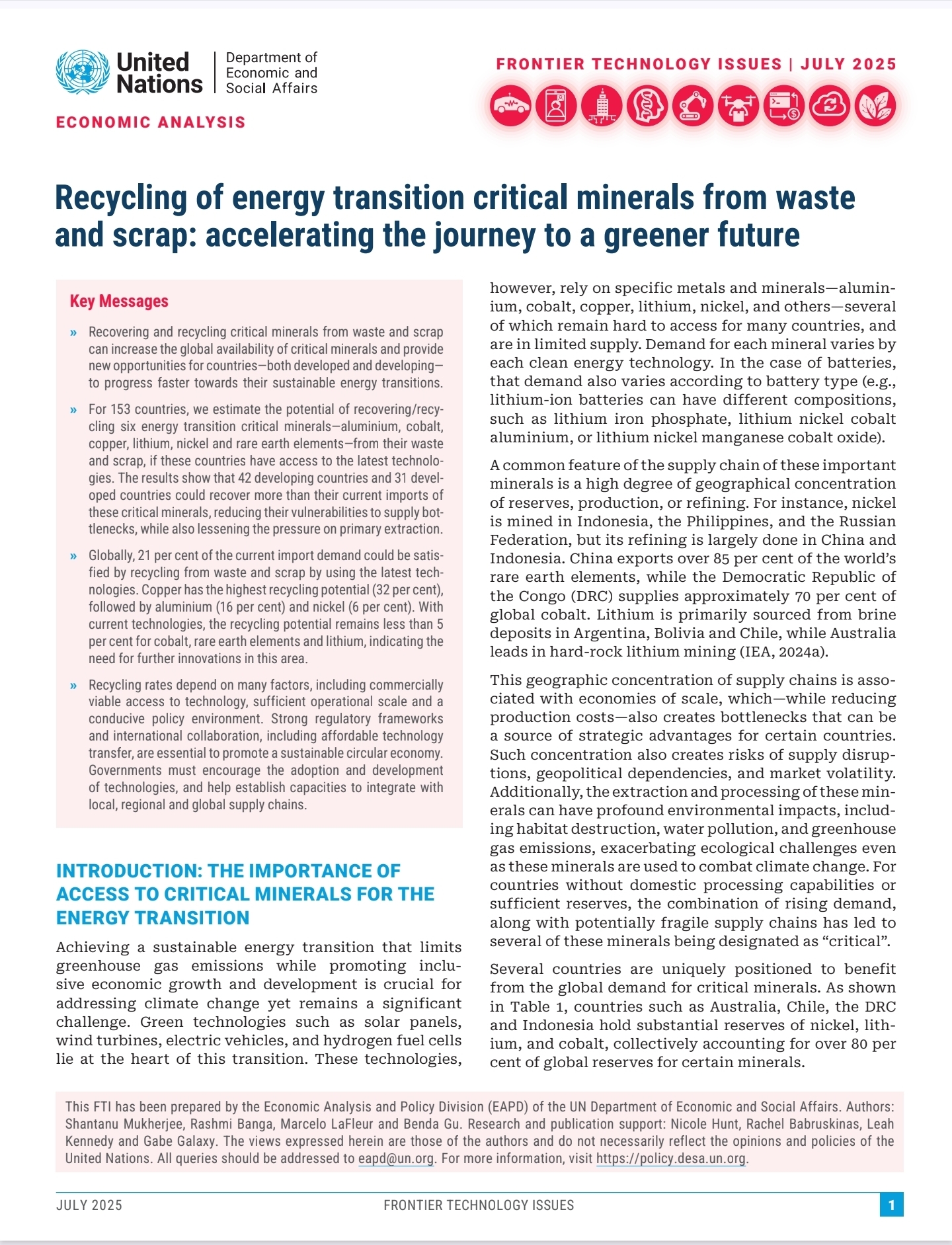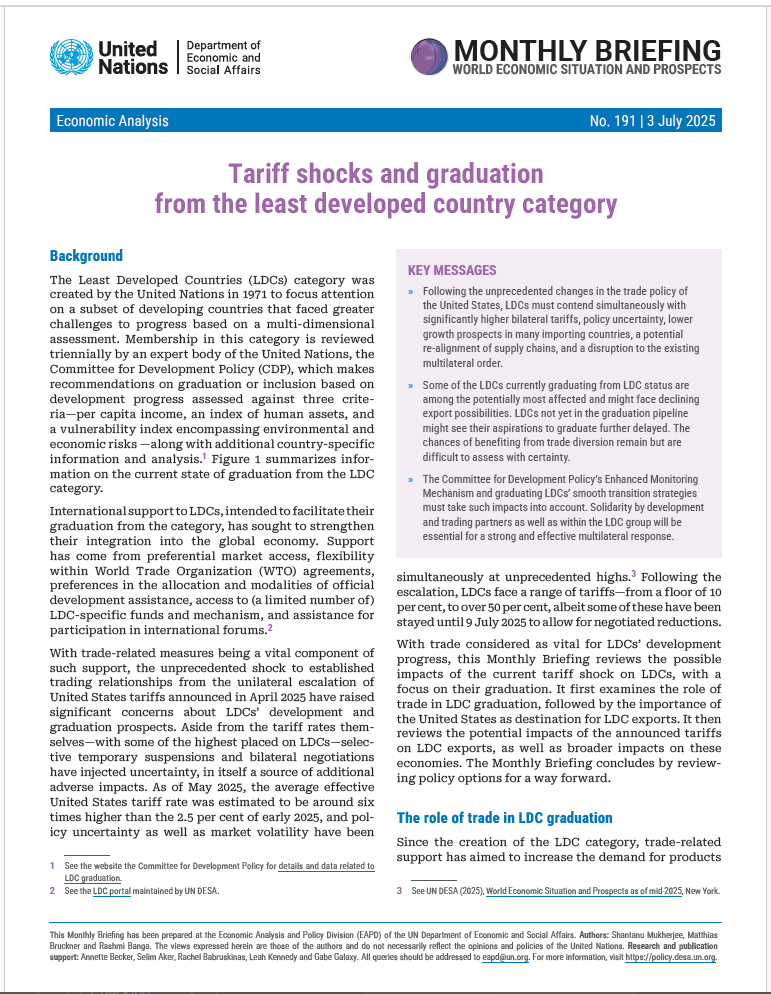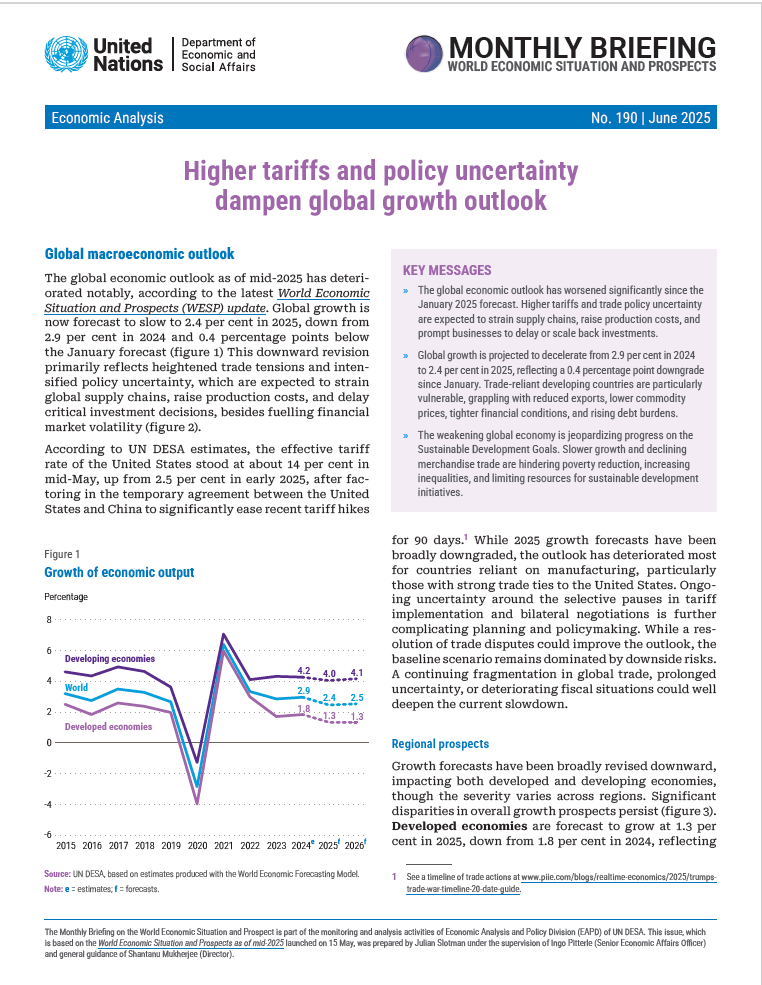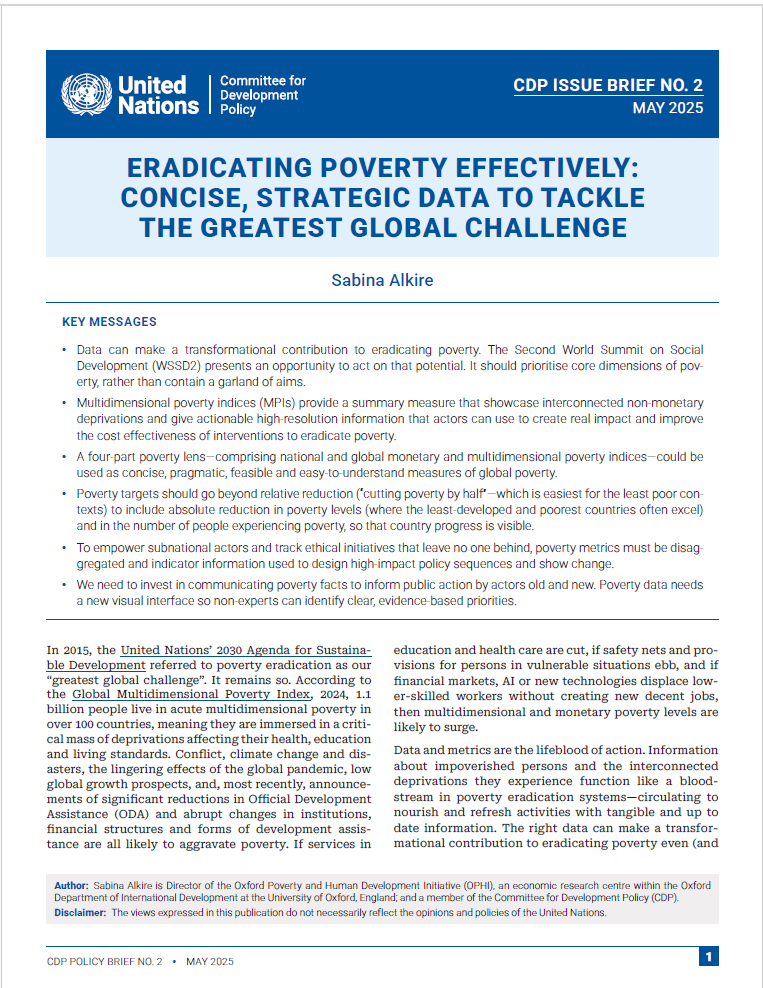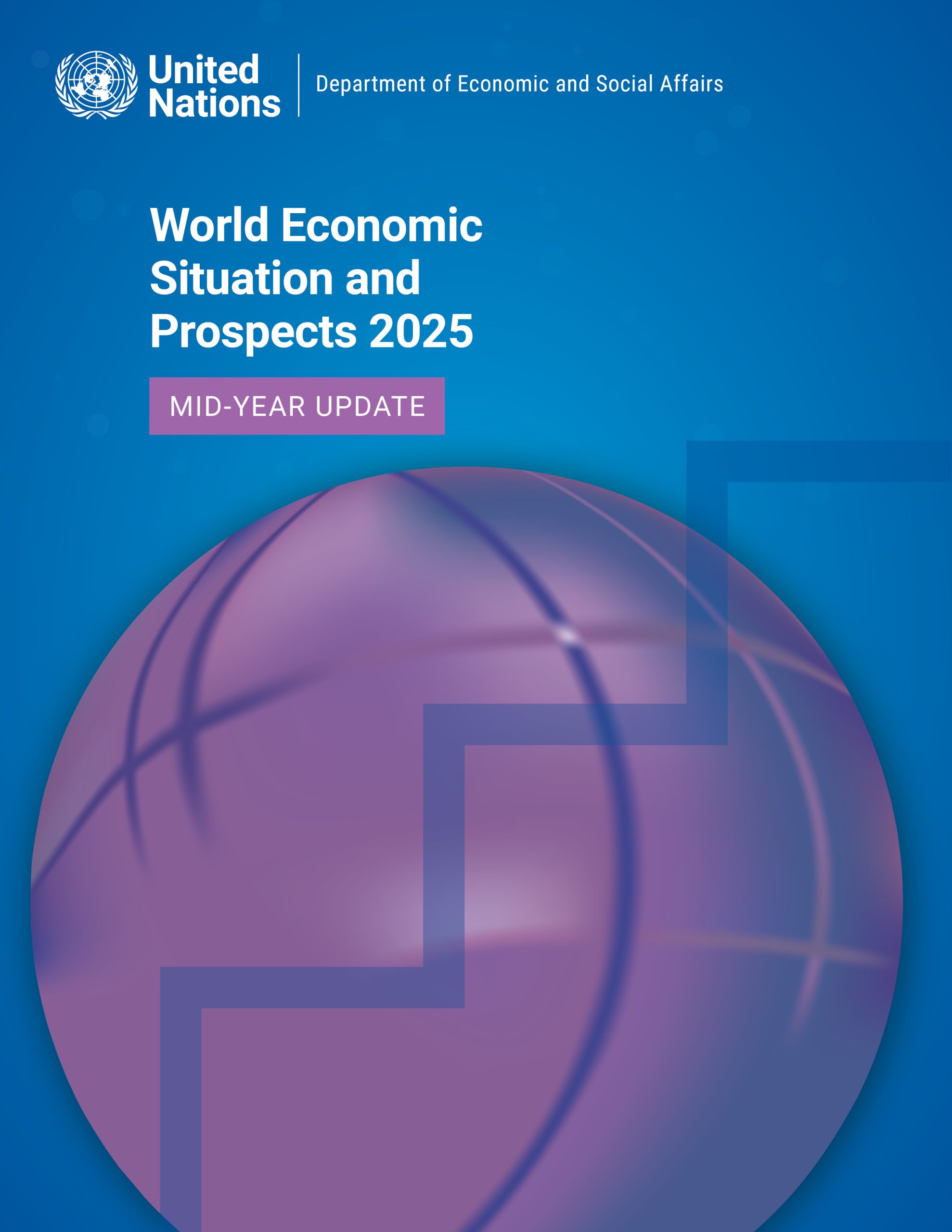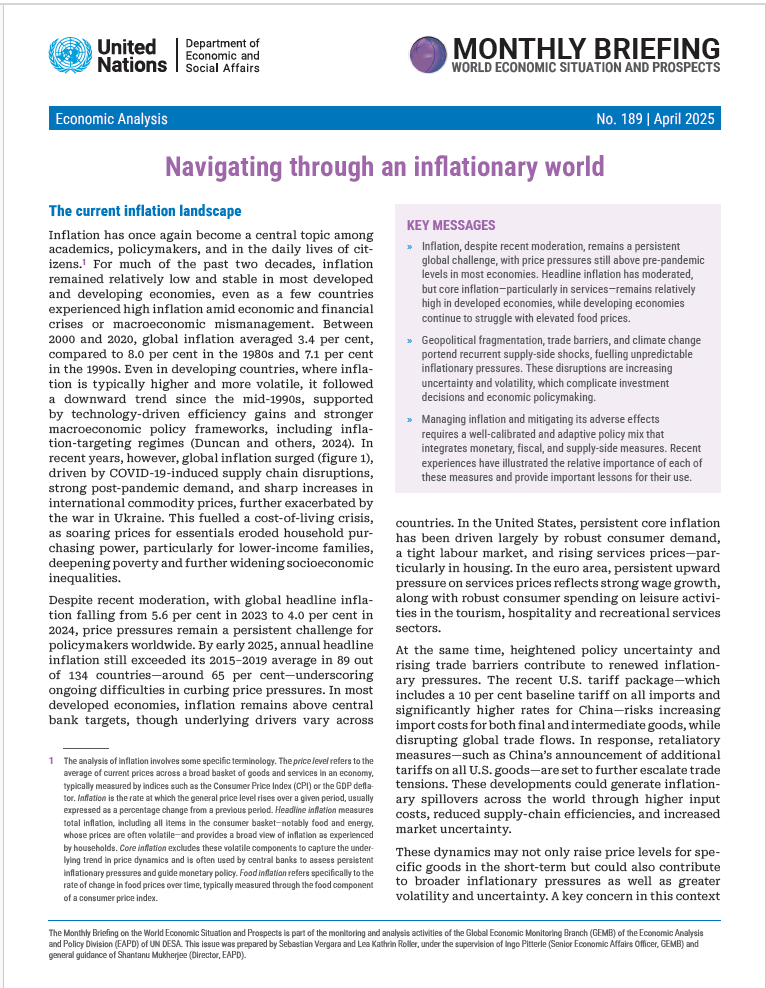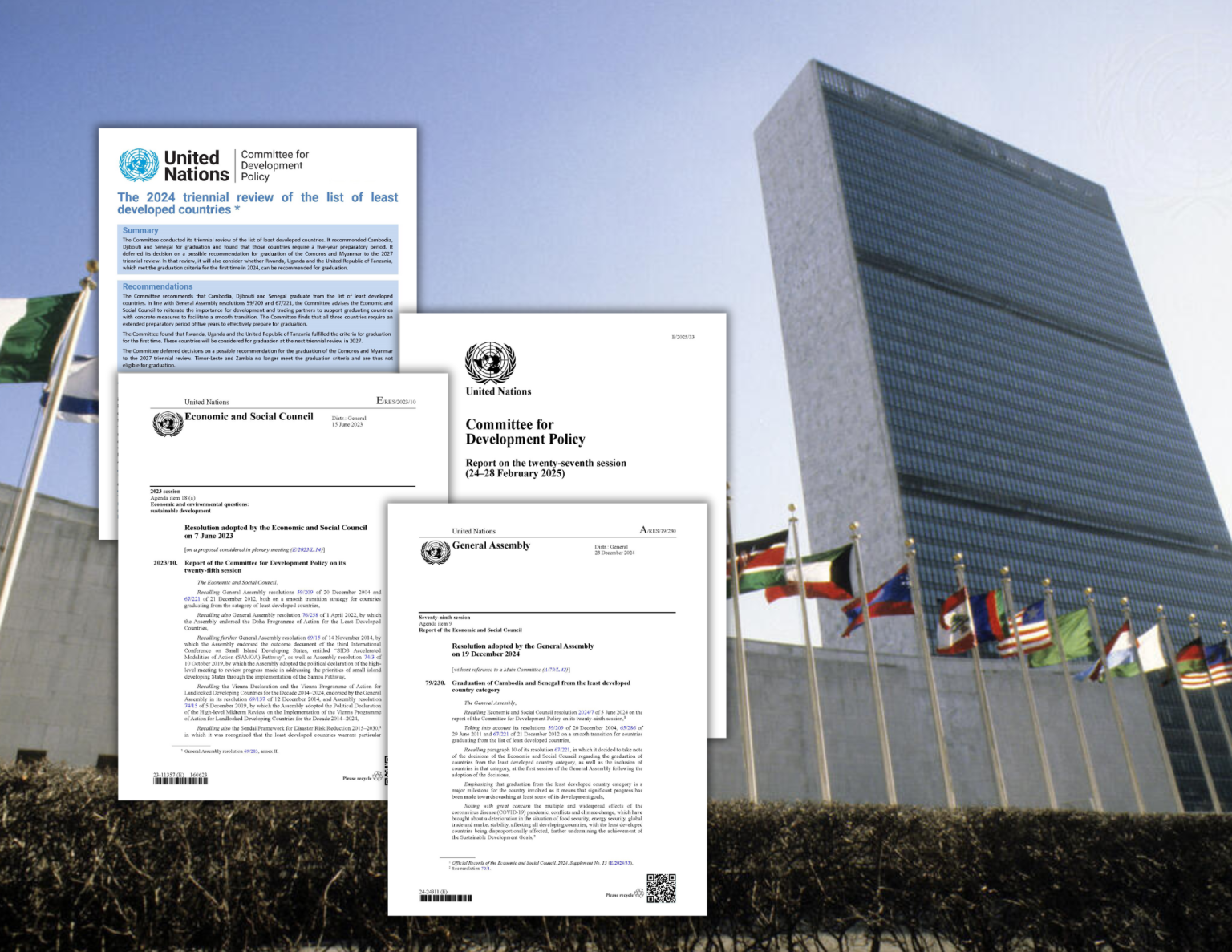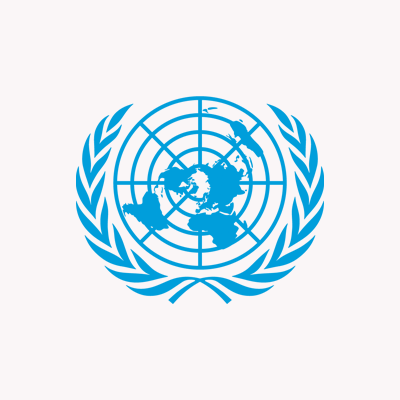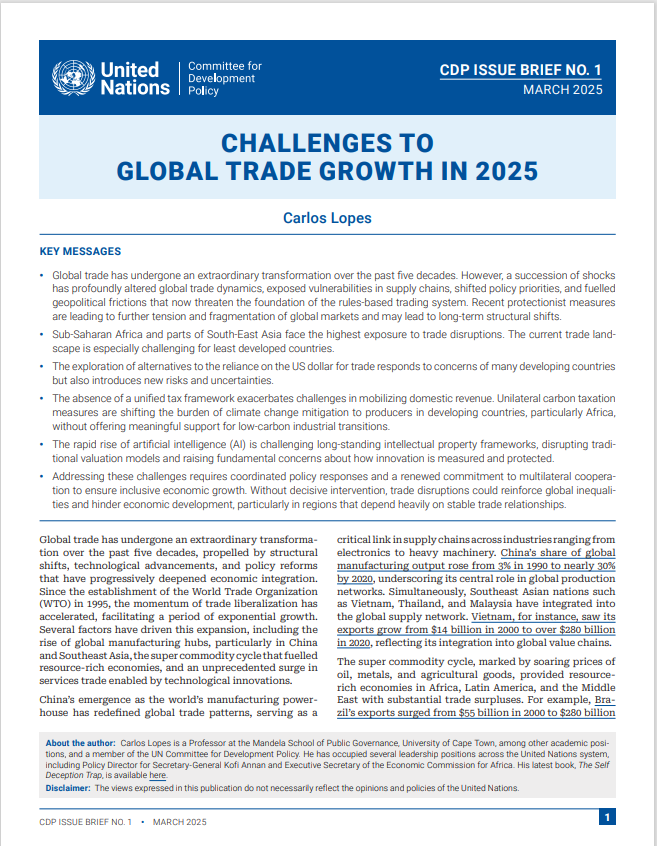Publications
Displaying 1 - 10 of 1100
from the least developed country category Background The Least Developed Countries (LDCs) category was created by the United Nations in 1971 to focus attention on a subset of developing countries that faced greater challenges to progress based on a multi-dimensional assessment. Membership in this category is reviewed triennially by an expert body of the United Nations, the Committee for Development Policy (CDP), which makes recommendations on graduation or inclusion based on development progress assessed against three criteria—per capita income, an index of human assets, and a vulnerability index encompassing environmental and economic risks —along with…
Global macroeconomic outlook The global economic outlook as of mid-2025 has deteriorated notably, according to the latest World Economic Situation and Prospects (WESP) update. Global growth is now forecast to slow to 2.4 per cent in 2025, down from 2.9 per cent in 2024 and 0.4 percentage points below the January forecast (figure 1) This downward revision primarily reflects heightened trade tensions and intensified policy uncertainty, which are expected to strain global supply chains, raise production costs, and delay critical investment decisions, besides fuelling financial market volatility (figure 2). According to UN DESA estimates, the effective tariff rate of the United…
عربي, 中文, English, Français, Русский, Español CDP excerpts on the report by theme New development contexts and pathways Convergence in human and social development Reviewing the framework for graduation from the least developed country category Enhanced monitoring of countries that are graduating or have graduated from the list of least developed countries ECOSOC resolution (E/RES/2025/L.9) on the Report of the Committee for Development Policy
عربي, 中文, English, Français, Русский, Español
 Welcome to the United Nations
Welcome to the United Nations
